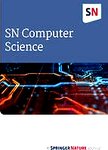版权所有:内蒙古大学图书馆 技术提供:维普资讯• 智图
内蒙古自治区呼和浩特市赛罕区大学西街235号 邮编: 010021

作者机构:Department of Computer ScienceCollege of Computer Engineering and Sciences Prince Sattam bin Abdulaziz University Al-Kharj 16273 Saudi Arabia Department of Computer Science Faculty of Computer Science and Information Technology Omdurman Islamic University Omdurman Sudan Computer Engineering Thapar Institute of Engineering and Technology Punjab Patiala India Department of Information System Faculty of Computer Science and Information Technology Omdurman Islamic University Omdurman Sudan
出 版 物:《SN Computer Science》 (SN COMPUT. SCI.)
年 卷 期:2024年第5卷第5期
页 面:564页
基 金:Prince Sattam bin Abdulaziz University, PSAU, (PSAU-2023- SDG-21) Prince Sattam bin Abdulaziz University, PSAU
主 题:Bald eagle search Internet of things LSTM Sleep quality recognition Smart devices
摘 要:Sleep quality prediction in Internet of Things (IoT) involves leveraging a system of interrelated devices to gather as well as analyse related data. Smart devices like wearable devices or smart mattresses endlessly monitor many parameters such as body movement, heart rate, and environmental situations in bedroom. Real-time recommendations and feedback transported to consumers, allowing them to create informed lifestyle changes for superior sleep hygiene. As IoT ecosystem continues to develop, a combination of various data streams as well as classy analytics holds assurance for further refining sleep quality forecasts and improving overall well-being. The article designs a Bald Eagle Search Algorithm with Hierarchical Deep Learning for Internet of Things Assisted Sleep Quality Recognition (BESHDL-SQP) technique. The purpose of the BESHDL-SQP technique is to recognize and classify the quality of the sleep level in the IoT environment. In the presented BESHDL-SQP technique, the preliminary stage of data pre-processing using min–max normalization involved to normalize the input data. For predicting sleep quality, hierarchical long short-term memory (LSTM) technique exploited. Lastly, BES model utilized for optimal hyperparameter selection of LSTM method which helps in attaining enhanced results. To validate better performance of BESHDL-SQP technique, a huge range of simulation analysis is carried out. The extensive results stated that the BESHDL-SQP technique exhibits supreme performance over other models. © The Author(s), under exclusive licence to Springer Nature Singapore Pte Ltd. 2024.